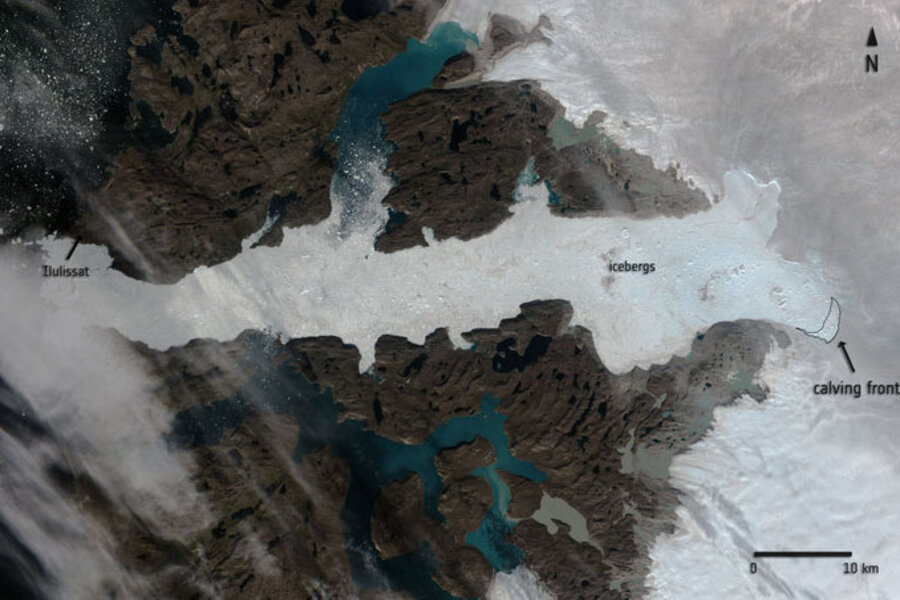This massive glacier calf can be seen from space
Loading...
A massive iceberg – large enough to cover the island of Manhattan in nearly 1,000 feet of ice – broke away from Greenland's Jakobshavn Glacier this month, in one of the most significant calving events on record.
The changes to the glacier are so dramatic, they can be visibly seen on images taken from space by the European Space Agency's Sentinel 1-A satellite.
Scientists believe the calving took place between Aug. 14 and Aug. 16. The acquired images suggest that the glacier rapidly advanced westward between July 27 and August 13, before the calving caused rapid retreat of the ice front to its position seen in images taken on Aug. 19.
Calves are not uncommon for the Jakobshavn Glacier, which produced the iceberg that sank the Titanic in 1912. The glacier parted with 3.4 square miles of ice, both earlier this year and back in 2010, according to European Space Agency.
Last weekend’s event might be the single biggest calving event on record, according to Arctic Sea Ice Blog, but some scientists aren’t so sure.
“Overall, I don’t think that they really can nail the ‘largest’ [calving event] or not,” wrote Richard Alley, a glaciologist at Pennsylvania State University, in an email to The Washington Post. “I wouldn’t get too excited on this, even though it is not good news.”
A combination of rising air and sea temperatures in the Arctic have made calving events more severe in recent decades.
In February 2014 Ian Joughin, a glaciologist at the University of Washington's Polar Science Center told The Christian Science Monitor that Jakobshavn Glacier is actually a fast current of ice within this ice sheet. He added that when the current reaches the ocean, chunks of ice breakaway from the glacier, and eventually these icebergs melt, causing sea levels to rise.
"We are now seeing summer speeds more than four times what they were in the 1990s, on a glacier which at that time was believed to be one of the fastest, if not the fastest, glacier in Greenland," said Dr. Joughin.
Greenland is a huge contributor to sea level rise right now, adding about a millimeter per year, even more than Antarctica, according to The Washington Post. It contains a potential to raise sea level by 20 feet.






